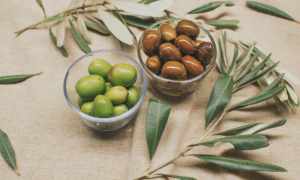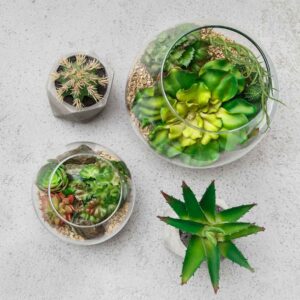Olives can’t be eaten straight off the tree, they are very hard and bitter and need to be pickled in order to enjoy.
The process of picking your own olives is a great way to reduce the added food acids and preservatives found in the commercial pickling process. It’s a long but relatively simple process and you can put your own signature on the recipe by adding any combination of herbs and spices you prefer.
DID YOU KNOW: black olives are simply a ripe olive. Olives can be pickled either green or black – although they have different pickling times so should be done separately.
There are many different ways to prepare olives and the following Greek recipe is one of the simplest.
Harvesting
- Around Feb/March some of the fruit will turn from plain green to purplish black. When some of the olives begin to change towards black, it will be fairly safe to harvest the green olives for pickling.
- Collect the fruit from the tree, remove odd stems and leaves and rinse olives in a clean bucket of water.
TIP: If your tree is large – place a cloth on the ground and strip fruit from the tree with hands or a rake with suitable spaced prongs.

Prepare Brine Solution
Fill a clean bucket or large bowl with: One 1/2 cup of coarse or cooking salt dissolved into every 10 cups of clean water.
Put aside while you prepare the olives.
Prepare The Olives
- Place olives on a clean stone surface or cutting board and bruise them with a heavy object/hammer or alternatively, prick several times with a fork or make 2-3 slits in the skin of the olive with a small serrated knife. This bruising, pricking or slicing will allow the water and salt to penetrate the fruit – drawing out the bitterness and preserving it.
- After bruising/slicing olives, place them immediately into your bucket of brine water. A plate can be placed on top to keep the olives submerged in the liquid, which is a must.
- Pour the liquid away each day and replace with fresh salt water.
- Repeat this washing process for about 12 days for green olives and 10 days for black olives.
The Final Salting

The best test for your olives is to bite one. When the bitterness has nearly gone, the olives are ready for the final salting.
- Pour off the salt brine liquid, measuring the last lot of liquid so that you know the volume of final salt brine that will be required.
- Pour the measured amount needed of fresh, warm water into a pan and dissolve the salt – this time using a ratio of 1 cup of salt to 10 cups of water.
- Bring this to the boil and allow to cool
- Place olives in bottles/jars and then pour the cooled salt water brine over them until the fruit is completely submerged.
- Top up jars with up to 1cm of olive oil to stop air getting to the fruit and then seal the lids on.
- These bottles/jars will store for at least 12 months in a cool cupboard. After 1-2 months, olives will usually be ready for eating.
Ready To Eat Yout Olives
- Pour out the strong preserving brine and fill the jar with clean, cool water. Leave in the fridge for a further 24hours – the plain water leaches some of the salt back out of the olives.
- At this stage you can add any other flavourings you wish.
Popular flavour combinations include:
- garlic, basil and lemon juice
- Chilli and garlic
- Lemon zest, fennel seed
- Bay leaf, lemon, chilli
- Parsley, lemon, thyme, fennel
Now the best part – You are ready to eat and enjoy your own olives.




